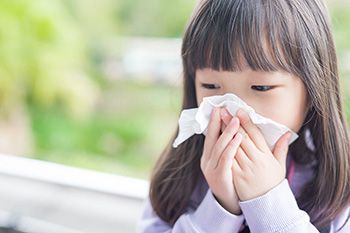 Fall is just around the corner, and with the change of the season comes a change in allergens. Approximately 35 million Americans suffer from seasonal allergies, and while over-the-counter medicines may help, there are other ways to aid in air quality in your home.
Fall is just around the corner, and with the change of the season comes a change in allergens. Approximately 35 million Americans suffer from seasonal allergies, and while over-the-counter medicines may help, there are other ways to aid in air quality in your home.
Despite being indoors, our homes are filled with items that can elevate symptoms – like fabric-covered furniture and pillows, carpet, tightly-sealed windows, and warm, damp spaces. A home with poor indoor air quality can put us at risk for a number of ailments, including allergies, asthma, and respiratory issues, and using an air purifier can help create cleaner, healthier air.
Humidifier Versus Air Purifier
What’s the difference between a humidifier and an air purifier? Why should you purchase a purifier if you already have a humidifier?
An air purification system can remove dust, smoke, and other allergens from the air, while humidifiers add water into the air. Both systems can help your home. You can replace the moisture in the air and improve the quality of air in your home by adding a whole-house humidifier and checking furnace filters more often. Purchasing a high-quality dehumidifier will help prevent mold that can form after hard rains and higher temperatures. Many viruses thrive in low-humidity environments, and living in an overly dry environment can make people prone to infection. Putting humidity back into your home can reduce the number of health concerns.
Living with very dry air irritates asthma and allergy symptoms and leads to dry noses, sore throats, and other health concerns. You can replace the moisture in the air by adding a whole-house humidifier to your home.
How Does a Whole-House Air Purifier Help Your Home?
Indoor air quality is important for comfort and health reasons. Allergies come from “stuff” in the air, and an air purification system can help eliminate allergy-causing particles from the air. These systems contain air cleaners or a thicker filter to pull more allergens from the air. If you suffer from allergies, choose an air purification system designed to combat them.
The type of purifier you choose depends on your allergies. Most purifiers come with a HEPA filter, which helps eliminate pollen, dust, dust mites, mold spores, ragweed, and pet dander from the air. There are simple pleated ones to catch smaller particles, and air purifiers with larger pleats to pull larger particles from the air.
An indoor purifier should be placed in rooms you spend the most time in. There are portable purifiers you can move from room to room. It’s best to keep a purifier in your bedroom at night during sleep times for easier breathing.
If you suffer from asthma, consider an asthma air purifier or an odor and chemical purifier, since these contain added filtration systems to aid in the removal of particles in the air. Also available on the market are smoke purifiers, designed to remove smoke, fireplace soot, and other fumes associated with fire. HEPA air purification systems are the best choice for those with pets. There are also all-purpose purifiers on the market to improve indoor air quality and make your home a healthier one.
For HVAC systems, dust can build up in the ductwork. You can invest in a whole-house air purifier, HEPA vacuum or filter, electronic air filter or cleaner, and ultra-violet (UV) lighting. Having an air cleaner or UV lighting will help catch the allergens in the air. UV lights also kill bacteria and mold spores.
